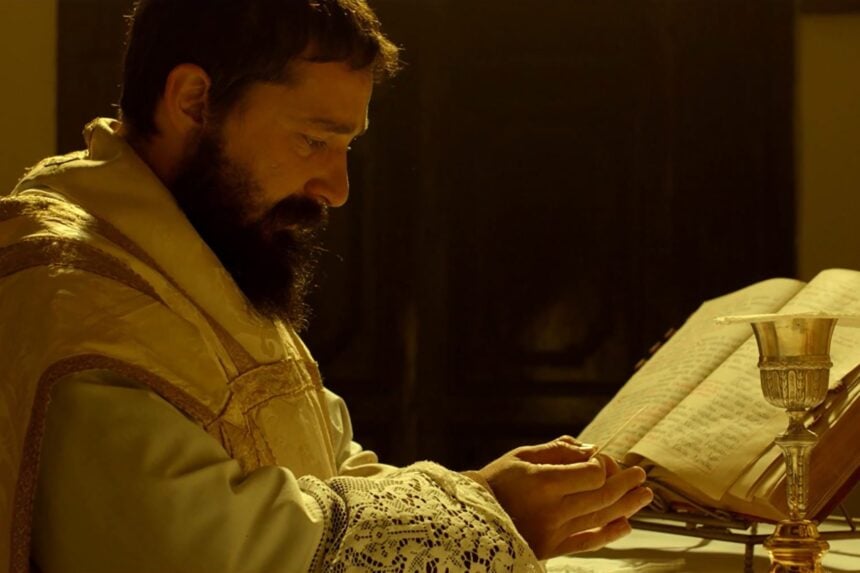Shia LaBeouf is the latest celebrity to convert to traditional Catholicism.
LaBeouf told Bishop Robert Barron on the bishop’s “Word on Fire” podcast that he was on the brink of suicide when director Abel Ferrara suggested that the former Hollywood superstar play the lead in his upcoming film about the 20th-century Catholic Saint Padre Pio. LaBeouf, whose career has had its ups and downs—and a big “down” last year after a former girlfriend sued him for alleged sexual battery, assault, and infliction of emotional distress—quickly seized the opportunity for the unusual role.
LaBeouf then took up residency in the parking lot of the nearest Catholic seminary, found a nearby church that celebrates the traditional Latin Mass (TLM), befriended Mel Gibson, and converted to Catholicism. LaBeouf credits the TLM with helping him find faith during the nadir of his professional and personal life.
This low point was the result of a string of mistakes, which LaBeouf has enumerated in his post-conversion interviews: fighting with other actors on set, abusing drugs, and not telling his sexual partners about his “cold sores.” (Some people confess their sins in private to a priest; celebrities do interviews.)
As odd as he may seem, LaBeouf is no anomaly. In many ways, his conversion is typical of today’s celebrities who cross the Tiber.
The recent conversion of conservative commentator Milo Yiannopoulos follows a similar story arc. He had endured public breakups with Breitbart and Gavin McInnes’s Censored TV. His star was waning. Then he converted to traditional Catholicism, did interviews in Catholic media, and aired a lot of dirty laundry.
Milo’s post-conversion interviews on Church Militant—a Catholic news organization in Detroit—focused on his past homosexual lifestyle. Below Milo’s image on the screen was superimposed, “Milo Yiannopoulos: Reformed Sodomite.”
Abby Johnson is another celebrity whose conversion follows this pattern. Her career at Planned Parenthood had seen better days. According to a longtime friend, Johnson had “been talking about bankruptcy.” She complained on Facebook about Planned Parenthood’s telling her that her job performance was “slipping” despite her working her “whole big butt off.” She ended the post by explaining, “They obviously do not value me at all. So, I’m out and I feel really great about it!”
She became a Catholic, and as a pro-life advocate, she gave interviews in which she confessed to killing lots of children; she spoke at pro-life events about her time in that role; and in recent years, she has become a cheerleader for the traditional Latin Mass.
Despite the modern trend, there have been a few celebrities who found Catholicism when their career was not in the toilet. Dolores Hart is the best example.
Hart gave Elvis Presley his first on-screen kiss in the film Loving You (1957). She was on her way to superstardom. Then, at the age of 24, at the pinnacle of her profession, she gave it all up to enter the convent. She did not make this event a public affair. In fact, she kept quiet for over four decades, in stark contrast to today’s celebrity converts.
There may be good reason to question the sincerity of these more recent converts, but they are indicative of a positive trend, one that traditional Catholics should cheer. Since His Holiness Pope Francis enabled local bishops to restrict the TLM via his papal motion Tradititionis Custodes (“Keepers of Tradition”) last year, a wave of restrictions have stifled the TLM in dioceses across America. However, the TLM’s new star power should be enough to give the bishops second thought—assuming Bishop Barron is not the only film buff among them.
The fact that these celebrities come to traditional Catholicism with hat in hand during difficult times attests to the deep draw of that spiritual tradition and to its increasing influence in American culture.
—John Howting

Leave a Reply